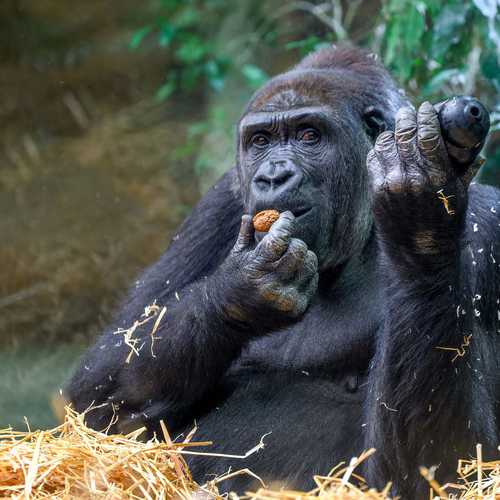Positive animal welfare
There is no greater responsibility for institutions housing animals in human care than the welfare of these animals. With good welfare, we know that the animals in our zoos and aquariums can contribute more fully to conservation, education and research, and thrive. But what exactly is animal welfare?
Positive animal welfare
EAZA is committed to setting high animal welfare standards and promoting positive welfare of animals, not only in our Member institutions but also through supporting zoos and aquariums which are working towards reaching EAZA’s accreditation standards.
We share best practice through courses, events and publications, and constantly update our standards with latest welfare science. EAZA’s welfare evaluation meets the global benchmark set by the World Association of Zoos and Aquaria (WAZA).
Animal welfare science seeks to understand the impact of nutrition, physical health, behaviour and the environment on an animal's experience, and guide our animal management practices to promote positive welfare.
To support this, EAZA has adopted the 'Five Domains Model of Animal Welfare' framework described by Mellor and colleagues (2020). This model includes four Physical Domains – Physical Health, Nutrition, Environment and Behaviour – which all feed into and impact Domain 5 – the Mental Domain. It is the Mental Domain that reflects the animal's welfare. For example, do behavioural opportunities allow an animal to feel joy and relaxation through positive social interactions? Does the animal have behavioural opportunities to search for food as it would in its natural habitat, therefore creating feeling of engagement, and reducing feelings of boredom and frustration?
The 'Five Domains' framework is often used as the basis for animal welfare assessments within zoos and aquariums. It supports EAZA's membership in WAZA who have also adopted the Five Domains in their Caring for Wildlife: WAZA Animal Welfare Strategy.

Animal welfare science and the methods to evaluate welfare are continually evolving. They are an integral part of EAZA Members' practices. As new research is released and ideas shared, our understanding of species-specific and individual needs and wants develops. Through conducting this research and applying the knowledge gained, animal welfare best-practice continues to progress.
This work is overseen by the Animal Welfare Working Group. Together with other Working Groups (from Nutrition to Animal Training and Zoo Horticulture) and Committees, they collaborate across a wide range of expertise.

"Caring for animals" resources
The various EAZA Working Groups, Taxon Advisory Groups and Committees develop tools, compile relevant resources and monitor the latest advances in these fields, so that EAZA zoos and aquariums have guidance and support to provide the best conditions to the animals under their care.
